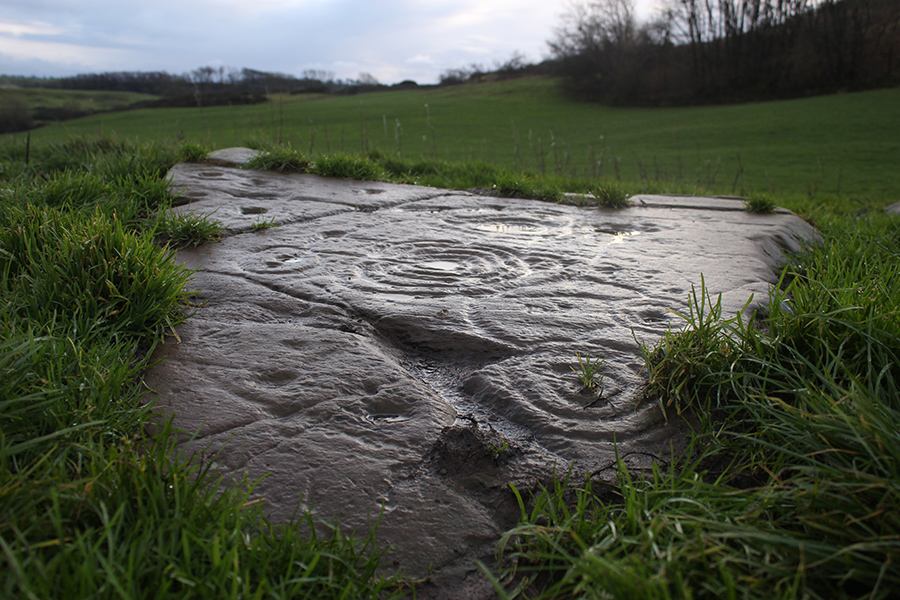People have been producing rock art across the globe for more than 40,000 years. There are around 3000 known examples in Scotland, usually found on bedrock outcrops and boulders, and they are thought to date from the Neolithic (4,100 BC–2,500 BC) to the Bronze Age (2,500 BC–800 BC) period. Around 120 of the most important examples are designated as scheduled monuments, meaning that they are legally protected.
This year we scheduled three new prehistoric rock art sites as nationally important monuments. The sites are located across Scotland: from Kirkcudbright in Dumfries and Galloway, to Dull in Perth and Kinross and Peterculter in Aberdeenshire.
Our research into these sites was helped by the recently completed Scotland’s Rock Art Project. This project was a five-year programme working with communities to record, research and raise awareness of prehistoric rock carvings across the country.
Common motifs
Rock art in Scotland is almost entirely abstract and the newly designated sites have the widespread and common type of motif: the cup mark (and cups embellished with outer rings or partial ring marks). These cup marks are part of a larger repertoire of abstract motifs with many of them circular or near circular in form, including U-shaped, penannular, radial, grooved, rosette, keyhole and spiral examples.
Other, linear or near-linear designs have been recorded on carved panels. The distinctive cup, ring, groove and rosette shapes were created by striking the rock repeatedly, often with a stone tool, such as a river-washed pebble, to chip away at the surface rock.
Many reasons have been suggested as to why the prehistoric peoples of Scotland carved these symbols, including mapping the landscape, predicting astronomical events, or perhaps marking ritual places. The time and effort these panels took to make suggests they held a special significance to people in prehistory and were an important part of their landscape, perhaps with many meanings.
The recent designation of three more examples of rock art contributes to our understanding and appreciation of Scotland’s ancient past, as well as adding further to the research potential of this art form.
To find out more about our rock art download our Prehistoric Rock Art in Scotland booklet. It gives an overview of rock art in Scotland and explores the key questions surrounding it: What is rock art? Where is it? How old is it? Who made it? And, above all, what does it all mean?

